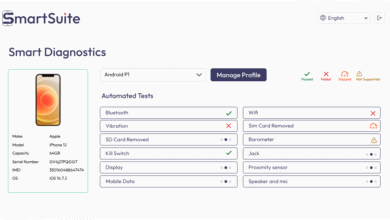MVPD vs vMVPD: How These Models Shape the TV Landscape

The television industry is undergoing a profound transformation, as consumers move away from traditional pay-TV toward more flexible, digital-first alternatives. At the center of this shift are two core models: Multichannel Video Programming Distributors (MVPDs) and virtual Multichannel Video Programming Distributors (vMVPDs). While both deliver multi-channel TV content, they differ in technology, pricing, and consumer experience. This article explores the key differences between MVPD vs vMVPD and their implications for consumers, content providers, and the future of television.
Defining the Players in TV Distribution
MVPDs:
MVPDs represent the traditional pay-TV model, including cable and satellite providers such as Comcast Xfinity, Spectrum, and DirecTV. These companies deliver live TV and on-demand content through physical infrastructure, like coaxial cables or satellite dishes, often bundled with internet or phone services.
vMVPDs:
vMVPDs are digital-first services that stream live and on-demand TV over the internet, with no need for proprietary hardware. Examples include YouTube TV, Hulu + Live TV, and Sling TV. They mimic the channel bundles of MVPDs but are delivered via apps on smart TVs, mobile devices, or streaming sticks.
By 2024, vMVPDs accounted for over 15% of the U.S. pay-TV market, driven by rising cord-cutting and demand for flexibility.
See also: Editing for Narrative Storytelling: Tools and Techniques
Delivery Mechanisms: Infrastructure vs. Internet
MVPDs:
- Depend on dedicated infrastructure (cables or satellites)
- Require professional installation and set-top boxes
- Deliver reliable, consistent signal quality
- Ideal for rural areas with limited internet access
vMVPDs:
- Stream via broadband connections
- No special hardware required—accessible on existing devices
- Easy to set up and portable across devices
- Performance varies depending on internet speed and stability
MVPDs offer consistency and coverage, especially where broadband is lacking. vMVPDs prioritize mobility, ease, and device-agnostic access, making them more attractive to digital-savvy consumers.
Content Offerings: Bundles and Customization
MVPDs:
- Offer large, fixed channel bundles (100–300+ channels)
- Include local networks, premium channels, and sports
- May include additional services (on-demand, pay-per-view)
- Average U.S. cost: $100+ per month
vMVPDs:
- Provide slimmer, customizable channel lineups
- Base plans start around $35–$80 per month
- Add-ons available for specific interests (sports, movies, kids)
- Include cloud DVR, on-demand libraries, and flexible streaming
Consumers appreciate MVPDs for their comprehensive coverage but value vMVPDs’ ability to personalize packages and avoid paying for unused channels.
Pricing and Accessibility: Cost vs. Flexibility
MVPDs:
- Higher costs due to bundling and equipment fees
- Long-term contracts and early termination fees
- Reliable access even in regions with poor broadband
- Installation and maintenance support included
vMVPDs:
- Lower upfront costs; no installation fees
- No contracts; easy to start or cancel
- Dependent on internet quality (25+ Mbps recommended)
- Premium features (like cloud DVR) may cost extra
For rural customers, MVPDs remain a practical solution. For urban and suburban users with strong internet, vMVPDs offer greater flexibility and affordability.
User Experience: Traditional vs. App-Based
MVPDs:
- Familiar remote and set-top box interface
- Channel surfing and linear schedules dominate
- Reliable for live sports and events
- Can feel outdated in comparison to streaming interfaces
vMVPDs:
- App-based navigation across devices
- Cloud DVR and on-demand playback
- Features like multi-screen streaming and personalized recommendations
- Portability allows watching on-the-go or across multiple locations
MVPDs appeal to users valuing consistency and ease of use, while vMVPDs attract those who want a modern, streaming-style experience with enhanced functionality.
Market Dynamics and Consumer Trends
MVPDs:
- Have experienced a steady subscriber decline due to cord-cutting
- Still dominate among older viewers and sports fans
- Retain strong presence in areas without high-speed internet
vMVPDs:
- Appeal to millennials and Gen Z, who prefer flexible streaming options
- Grew to over 20 million U.S. subscribers by 2024
- Prices are increasing—YouTube TV reached $72.99/month in 2023
- Compete with SVOD (e.g., Netflix) and AVOD (e.g., Tubi) services
MVPDs face pressure to adapt, while vMVPDs must balance rising costs with consumer expectations for affordability and value.
Strategic Implications for Stakeholders
For Consumers:
- MVPDs offer a reliable, all-inclusive solution, but at a premium
- vMVPDs deliver flexible, contract-free access with digital perks
- Choice depends on viewing habits, household needs, and internet availability
For Content Providers:
- MVPDs provide large-scale distribution and higher carriage fees
- vMVPDs offer digital reach and data-rich audience insights
- Leaner vMVPD packages make it harder for niche networks to gain inclusion
For Advertisers:
- MVPDs offer broad reach with less granular targeting
- vMVPDs enable programmatic buying, dynamic ad insertion, and user-level data
- Growth in connected TV (CTV) is pushing ad budgets toward vMVPD platforms
Advertisers increasingly favor vMVPDs for precision and interactivity, while still relying on MVPDs for scale and live event reach.
The Future of Pay-TV: Convergence and Competition
The lines between MVPDs and vMVPDs are blurring:
- MVPDs are launching streaming apps (e.g., Xfinity Stream) to retain users
- vMVPDs are expanding channel lineups and improving DVR/cloud services
- Hybrid models like FuboTV combine live sports, SVOD features, and on-demand libraries
As consumer expectations evolve, both models are adapting by merging traditional strengths with digital innovations. The result is a more complex but consumer-friendly landscape, where users can craft their ideal viewing experience from a growing menu of options.
MVPDs vs. vMVPDs: A Coexisting Future
MVPDs and vMVPDs represent two ends of the pay-TV spectrum:
- MVPDs: Stability, reliability, and full-service offerings
- vMVPDs: Flexibility, innovation, and digital-first access
Their continued coexistence reflects a diverse media market where different segments of the population prioritize different needs. As technology, content, and consumer habits evolve, these models will remain pivotal—often overlapping—to serve an increasingly fragmented and empowered audience.




